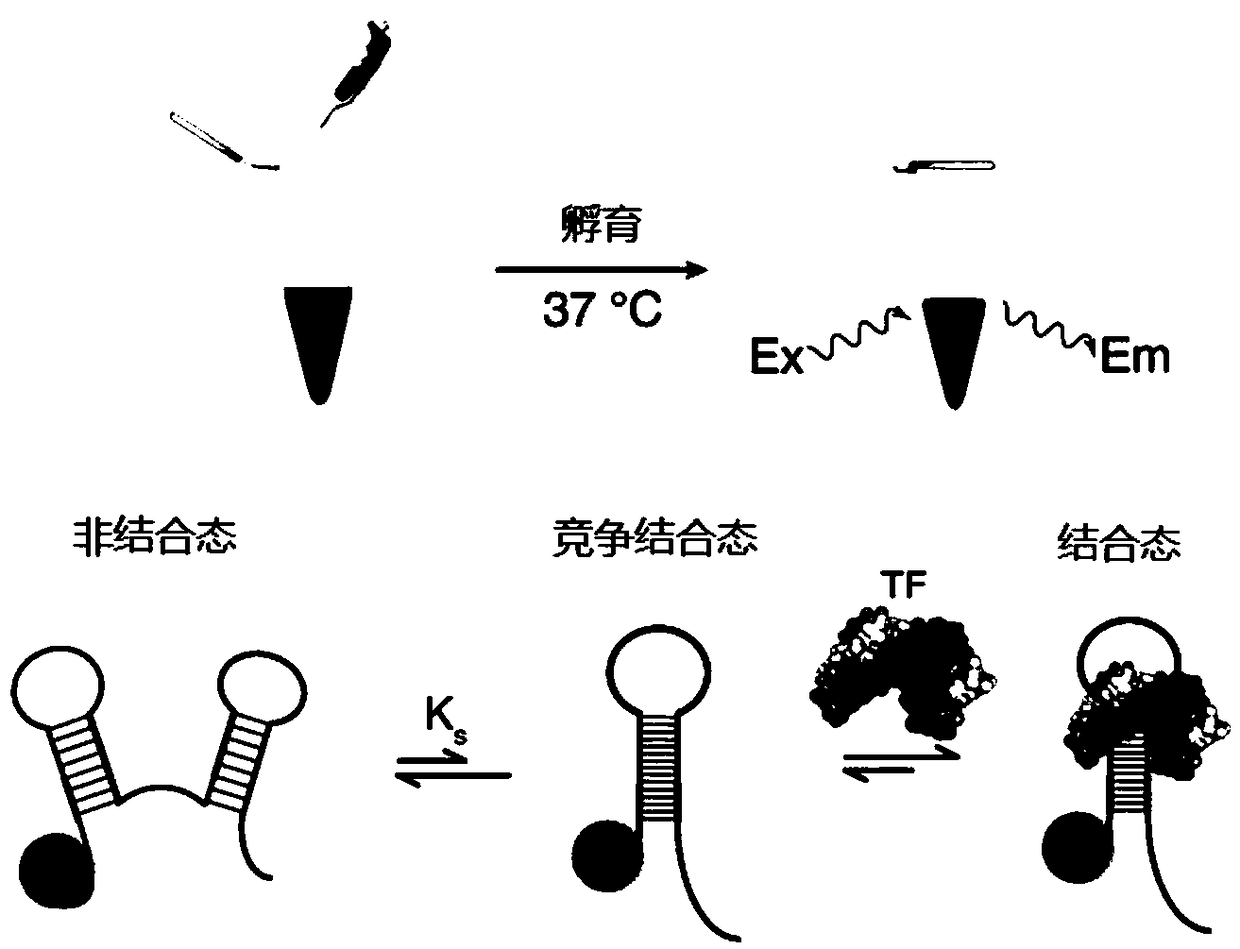Transcription factor fluorescence detection of based on DNA-silver nanocluster allosteric probe
A technology of transcription factors and silver nanoclusters is applied in the field of analysis and detection, which can solve the problems of low sensitivity of allosteric probes, and achieve the effects of convenient detection methods, good application prospects and strong fluorescence.
- Summary
- Abstract
- Description
- Claims
- Application Information
AI Technical Summary
Problems solved by technology
Method used
Image
Examples
Embodiment 1
[0041] The detection method for illustrating the transcription factor of the present invention comprises the following steps:
[0042] 1) Referring to existing literature reports (Journal of the American Chemical Society, 2013, 135(32), 11832-11839), and making improvements, DNA silver nanoclusters were synthesized in situ on DNA templates. Dissolve 1OD of DNA template in 900 μL of buffer 1 (10 mM citrate buffer, pH 6.8), heat to 90 °C, maintain for 15 min, and then cool down to 37 °C stepwise for 45 min, then add 15 μL, 10 mM freshly prepared Silver nitrate solution, after vortex mixing, react in the ice-water mixture for 30min in the dark, then, quickly add 20μL, 10mM freshly prepared sodium borohydride solution (sodium borohydride solution needs to be prepared with ice water), vigorously vortex on the vortex mixer Vortex for 30s, immerse in ice-water mixture for 10s, and vortex for 30s, repeat at least three times. Then react overnight in an ice-water mixture protected fro...
Embodiment 2
[0047] Selective experiment of detection method of the present invention
[0048] Repeat steps 1)-2) in Example 1, replace the transcription factor solution in step 2) with interfering substances such as BSA, HAS, Humanα-thrombin, p53, etc. of corresponding concentrations, and mix the interfering substances to prepare a mixed interfering solution , other conditions remain unchanged, detect fluorescence, and obtain the selectivity result of detecting target p50 by the method of the present invention, such as image 3 shown. from image 3 It can be seen that the method of the present invention has good selectivity to the target transcription factor.
Embodiment 3
[0050] The recovery rate experiment of detection method of the present invention
[0051] Repeat steps 1)-4) in Example 1, in step 4), carry out sample addition detection, add the p50 of 15nM, 25nM, 40nM, 50nM, 200nM, 500nM respectively, detect, obtain the method of the present invention in practice The recovery rate in the sample detection, the results are shown in Table 1.
[0052] Table 1 The inventive method detects the recovery rate of p50 in the DLD-1 cell extract
[0053]
PUM
 Login to View More
Login to View More Abstract
Description
Claims
Application Information
 Login to View More
Login to View More - R&D
- Intellectual Property
- Life Sciences
- Materials
- Tech Scout
- Unparalleled Data Quality
- Higher Quality Content
- 60% Fewer Hallucinations
Browse by: Latest US Patents, China's latest patents, Technical Efficacy Thesaurus, Application Domain, Technology Topic, Popular Technical Reports.
© 2025 PatSnap. All rights reserved.Legal|Privacy policy|Modern Slavery Act Transparency Statement|Sitemap|About US| Contact US: help@patsnap.com



